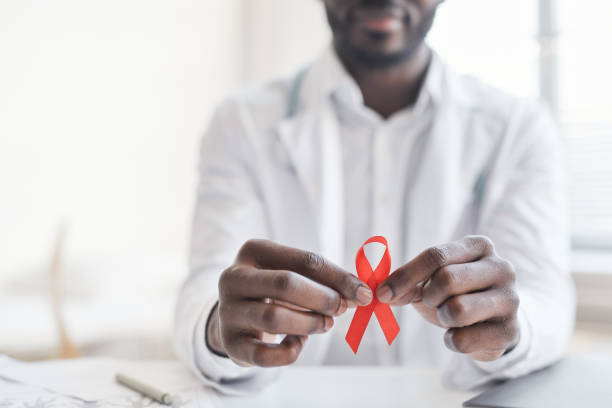Is There an HIV Epidemic Among Blacks Folks?


There’s increasing talk these days about HIV in the Black community, and it ain’t good! As you can probably guess, there are various reasons for this. Lack of proper health education, lack of access to healthcare, and general lifestyle habits are all making the issue of HIV and AIDs among Black folks very concerning.
But is it an epidemic?
That depends, but it’s definitely a growing problem. One we need to get a handle on before it reaches levels that simply can’t be ignored. If you’re wondering why so many brothers and sisters are coming down with HIV, it’s a complicated answer.
Let’s break it down.
RELATED: Are HIV Infections Exploding Among Black Women?
Black Folks and HIV Risks
HIV, or human immunodeficiency virus, is a virus that usually causes flu-like symptoms several weeks after you’re infected. It damages your immune system, basically weakening your body’s natural defenses. This is why the symptoms can be so varied. In the later stages, if left untreated, HIV can become AIDS, which stands for acquired immunodeficiency syndrome.
Now the question is: why are so many Black folks contracting this thing?
The Centers for Disease Control and Prevention (CDC) has all the stats. And frankly? They speak for themselves. In 2021, Black Americans aged 13 and above made up just 12 percent of the U.S. population, but over 40 percent of those who were HIV-positive. That’s a big discrepancy!
Sadly, it gets even worse. The pandemic lockdowns prevented many Black folks from getting the healthcare services they needed. Take for instance 2020, when the Black community got 44 percent fewer HIV tests in non-medical facilities than they did in 2019.
The equation’s simple. Fewer tests = fewer diagnoses. Which, of course, means more people were unknowingly spreading the virus. Unfortunately, this complicated the already pretty bad risk factors among the Black population. According to the CDC, eight times as many Black Americans have HIV compared to white Americans, with a 10 times higher risk of dying from HIV/AIDs than whites.
Risk factors that affect this include:
- Lack of healthcare
- Lack of safe housing
- Lack of HIV education
- Unprotected sex
- Sharing drug paraphernalia
Now, we also gotta consider the fact that there’s a societal problem. We can pretend it doesn’t exist, but that only worsens the issue. After all, the only way to address a problem is to first state what that problem is. For Black folks, it all starts with erasing stigmas.
Tackling the HIV Problem
Let’s keep it real. Discrimination and racism play a role – to some degree – in a lotta factors that impact our health. Because HIV is more common among homosexuals, people with HIV may not want to admit it. They may not want to bring increased stigmas upon themselves, which may keep them from engaging in measures to prevent HIV transmission.
We’ve also gotta acknowledge the socioeconomic barriers. According to the CDC, Black folks are disproportionately represented in areas of poverty, crime, and drug use compared to other races and ethnicities. This means that there are fewer opportunities to get quality healthcare and health education – which are vital for reducing HIV prevalence. Without safe, supportive communities, many Black folks may struggle to reduce their risk factors.
The CDC also notes that the Black community tends to have a higher distrust of medical authorities and healthcare systems. Add on the fact that Black folks have disproportionately higher rates of STDs like gonorrhea and syphilis, and we have the perfect storm for increased risks of HIV transmission.
RELATED: Living with HIV: 6 Unexpected Challenges Black Patients Face
How to Change This
The best way to change this is by first creating an environment where the Black community feels safe, trusting, and cared about. If we don’t foster this level of local support and guidance, the rest of the issues will never be resolved. In other words, we need to revamp communities. Joint efforts at the federal, state, and local levels can help bring this about.
Already, the CDC is working with urban development departments to address issues of healthcare and education access in marginalized communities. So-called ‘priority areas’ are also being rewarded with financial assistance to help them create HIV awareness and prevention programs.
One of the main ways to fix the HIV epidemic among Black people in the U.S. and worldwide is by improving opportunities. If people are contracting HIV through risky behaviors and drug use, we have to understand why. Oftentimes, these habits stem from a lack of opportunity and life purpose. People are more likely to become self-destructive when they see no light in the darkness.
If we want to truly address the HIV epidemic, we have to address this problem at the source.
At the end of the day, it all starts by talking. Through acknowledging the issues and bringing awareness, we can slowly but surely become the change we want to see.




